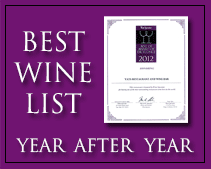Foie gras, the fattened liver of a waterfowl, namely a duck or a goose, is produced by a special feeding process.
As 1999 comes to a close and echoes of past festivities hint at the expectations for the coming century, few delicacies embody the quintessential spirit of the millennium as does foie gras. This penultimate luxury is typically associated with the decadent triumvirate of foie gras, truffles, and caviar. These days any self-respecting restaurant menu will offer some variation of a foie gras dish, from a perfectly delicate terrine slice to a succulently seared morsel with a plethora of fruit accompaniments. New Year’s Eve celebrants would not even dream of ringing in the New Year without a little foie gras.
Foie gras is almost always assumed to be a French product. After all, foie gras is the French word that means, “fattened liver.” During the Christmas holidays, French tables are laden with many delicacies, including terrines and cured foie gras. Gascony is the heartland of duck and goose foie gras production. For the French, foie gras is not just a familiar ingredient, but an intricate part of the historical and cultural heritage of the people.
Outside France, there exists a different story. While most people have heard of “paté”, few know what it is exactly, how it relates to foie gras, and what are the proper handling and preparation techniques. The intensive labor and time required to produce foie gras ensures that it maintains a romantic and exclusive reputation. As an expensive commodity, foie gras can be intimidating for the home cook. In truth, foie gras is one of the most fascinating, versatile and simple ingredients that can showcase a chef’s talent and enliven any amateur’s repertoire. Flip through my reference book, Foie Gras…A Passion, and you will discover some amazing facts as well as dazzling photographs of the possibilities that foie gras affords.
Foie gras, the fattened liver of a waterfowl, namely a duck or a goose, is produced by a special feeding process. Physiologically, ducks and geese possess an anatomy that allows their bodies to store excess fat in the liver naturally, in preparation for long winter flights from northern Europe to the Mediterranean, Middle Eastern and the Nile river basins. It was actually the Egyptians who recognized goose meat as a delicacy, particularly fattened geese, over 5000 years ago. In fact, ancient Egyptian hieroglyphics on the Tomb of Mereruka in Saqqara depict household scenes of servants force-feeding geese with grains. Two thousand years later, the Romans in trying to fatten geese for the prized flesh began to recognize the fattened liver as a delicacy in its own right. After the fall of the Roman Empire, the Ashkenazi Jews of Western and Central Europe preserved the art of making foie gras and eventually reintroduced it to Renaissance Europeans
Today, foie gras is produced in France, Hungary, Poland, Israel, Canada, and the United States. Most of the European and Israeli production provides for the consumption needs of France. Until recently, raw poultry importation restrictions prohibited the sale of European foie gras in the United States. In response, Hudson Valley Foie Gras was created to tap into the relatively unexplored American market of rising chef talent and consumer sophistication. With a production schedule exceeding 7000 livers per week, Hudson Valley foie gras is a recognizable presence on most menus.
Historically, foie gras was derived exclusively from fattened geese. Over the last fifteen years, however, most foie gras has been produced from ducks, moulard ducks specifically. Geese are more difficult to raise and are more susceptible to disease and stress. In either case, foie gras is a luxurious item. The liver is characterized by two lobes, putty beige in color, and slightly firm to the touch. Foie gras livers can weigh upwards of two pounds, with the average falling around a pound and a half. About 80 percent of a foie gras is comprised of fat, which makes it a very versatile product, suitable to a wide range of preparations, including grilling, searing, and roasting. The high fat content is frequently a cause of concern for eaters, but in truth, foie gras is such a luxurious item, you would have to consume an incredible amount, far more than you are likely to do, for it to have an adverse health effect.
Prior to cooking, foie gras needs minimal handling. Raw foie gras is vacuum-sealed in plastic bags. It needs to be rinsed briefly, then carefully deveined of the large veins that run through the center of each lobe. It can be marinated overnight in port, Sauternes, or any other sweet libation. Some chefs soak it in milk, claiming it helps to remove the blood. Cleaning foie gras is of particular concern when making a terrine, which is essentially paté and is named for the rectangular mold in which it is baked. Since the finished product depends on the pale, creamy color of the foie gras, any residual blood will discolor the terrine. The flavor will not be effected however, but aesthetically, the terrine will not be as pleasant.
Conversely, high-heat foie gras preparations, such as grilling, roasting, poaching, and searing, are not as effected aesthetically by less careful deveining since they result in foie gras that is richly browned on the outside, and lusciously molten on the inside. One of the simplest ways to enjoy the true magnificence of foie gras is to simply slice the liver into three-quarter inch slices, season it liberally with kosher salt and freshly ground black pepper, and sear the slices in a very hot, dry pan for 45 seconds on each side. It is that simple! The liver will be medium rare on the inside, caramelized on the outside, and heavenly all around.
The flavor of foie gras is quite sumptuous. It is at once velvety on the palate and with meaty overtones. Europeans have a longstanding tradition of enjoying a slice of terrine, chilled, with a garnish of salad and a glass of Sauternes or a similar sweet, bodied wine. In the United States, culinary preparations have always favored hot foie gras, accompanied by a symphony of garnishes from sweet stewed fruits to savory relishes. In any case, the cloying luxury of the liver demands an appropriate acidic balance and a complement of texture. The wine pairing of foie gras has also favored diversity and an awareness of dominant flavors. The philosophy of matching wines is “anything goes” which includes full-bodied cabernets, citrusy Champagnes, and aged sauvignon blancs. Occasionally, even a good beer or chilled sake could be appropriate.
One could say, discussing foie gras is my passion. However, there is only so much to be gained from reading. The best way to learn about foie gras is to eat it as often as possible. With New Year’s Eve fast approaching, and an attitude of new beginnings burgeoning, foie gras is the essential ingredient for any celebration. One of life’s spectacular indulgences, it is also accessible to everyone.
Leading Philippines Wine Supplier Yats Wine Cellars based in Clark Philippines with outlets in Angeles City, Subic Freeport and Manila Philippines has been not only a wine shop for fine wines covering all major wine regions but also a source of reliable and useful information about wine, wine appreciation, wine accessories, wine and health, food and wine pairing and all other matters relating to wine and its appreciation. This Philippines Clark Freeport based Wine Supplier and Wine Shop frequently holds public wine tasting events in Pampana Clark Freeport Zone, Angeles City, Subic Bay area, Makati, Fort Bonifacio and other areas in Philippines capital city Manila. Private Wine events such as private wine tasting and private wine dinners are also designed and organized for private clientele for their wine loving guests.
This wine shop in Angeles Clark Philippines is also renowned for a very unique product called Vintage Beer which many characterize as “Champagne beer” because it comes in a bottle with a Champagne stopper and metal restrainer. Vintage beers are top-of-the-line luxury beers bottle-conditioned for a slow fermentation to take place inside the bottle, a process that is very similar to Champagne which is designed to not only create the bubbles but also for an amazing complexity and depth of flavors.
For fans of Port and Sauternes, this wine shop in Clark Pampanga has a large selection of vintage port, Sauternes and Barsac as well as Eiswein/Icewine from Austria and Germany. Likewise, there is a good selection of Vintage Champagne at the wine shoppers’ disposal in the cellars of this wine shop in Clark Pampanga.
http://www.ClarkWineCenter.com
Getting to this wine shop in Pampanga Angeles City Clark Freeport Zone Philippines from Manila
Getting to the Clark Wine Center wine shop from Manila is quite simple: after entering Clark Freeport from Dau and Angeles City, proceed straight along the main highway M A Roxas. Clark Wine Center is the stand-along white building on the right, at the corner A Bonifacio Ave. From the Clark International Airport DMIA, ask the taxi to drive towards the entrance of Clark going to Angeles City. From Mimosa, just proceed towards the exit of Clark and this wine shop is on the opposite side of the main road M A Roxas.
Clark Wine Center
Bldg 6460 Clark Observatory Building
Manuel A. Roxas Highway corner A Bonifacio Ave,
Angeles Clark Freeport Zone, Pampanga 2023
0922-870-5173 0917-826-8790 (ask for Ana Fe)
Wine@Yats-International.com
YATS Wine Cellars
Manila Sales Office
3003C East Tower, Phil Stock Exchange Center,
Exchange Rd Ortigas Metro Manila, Philippines 1605
(632) 637-5019 0917-520-4393 ask for Rea or Chay
Best place to buy wine in Clark Pampanga outside Manila near Subic and Angeles City Philippines is Clark Wine Center. Visitors buy wine in Manila and Pampanga should not miss stopping at this wine shop for a few bottles of fine vintage wines to bring home.
You can skip to the end and leave a response. Pinging is currently not allowed.







